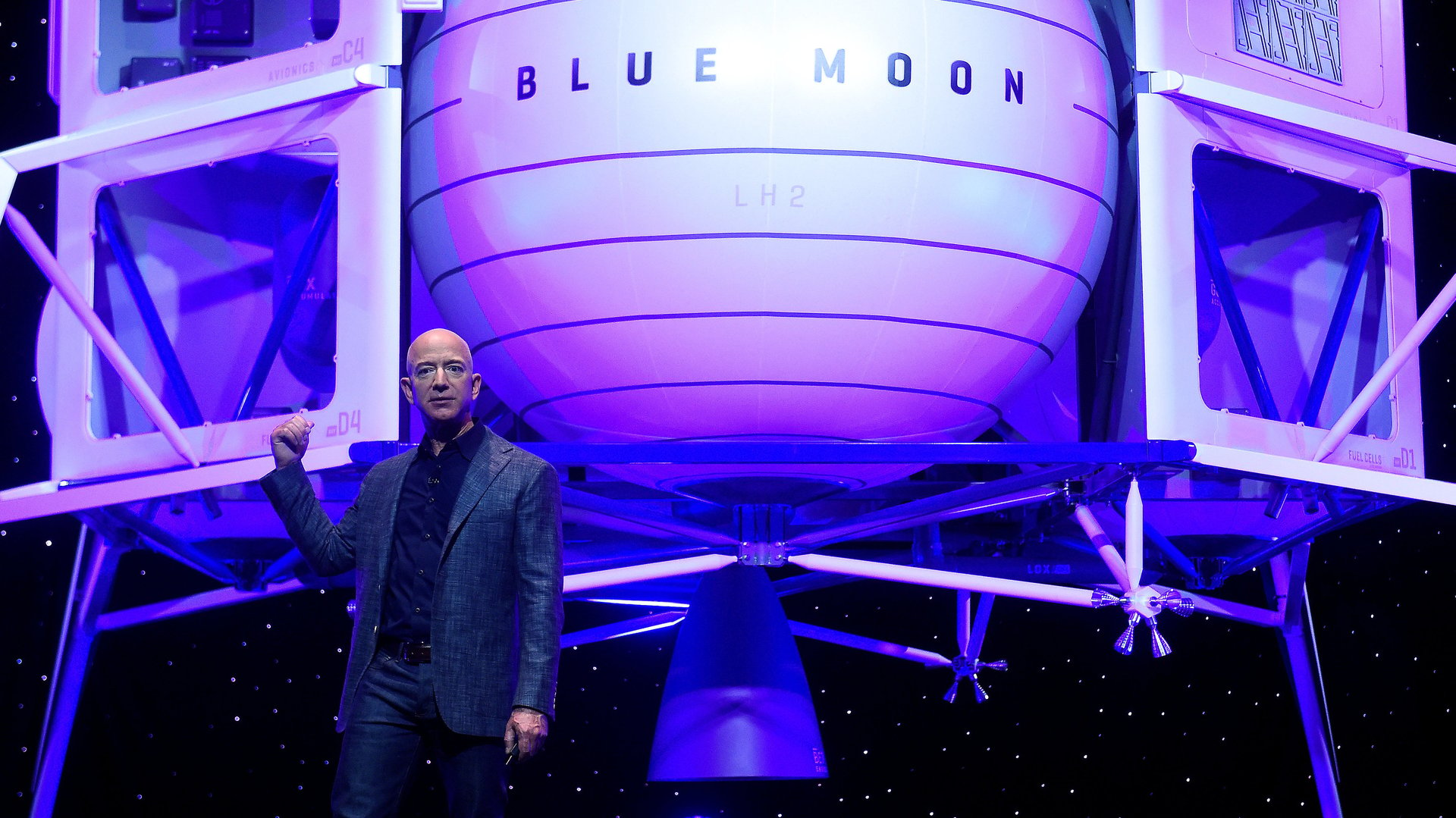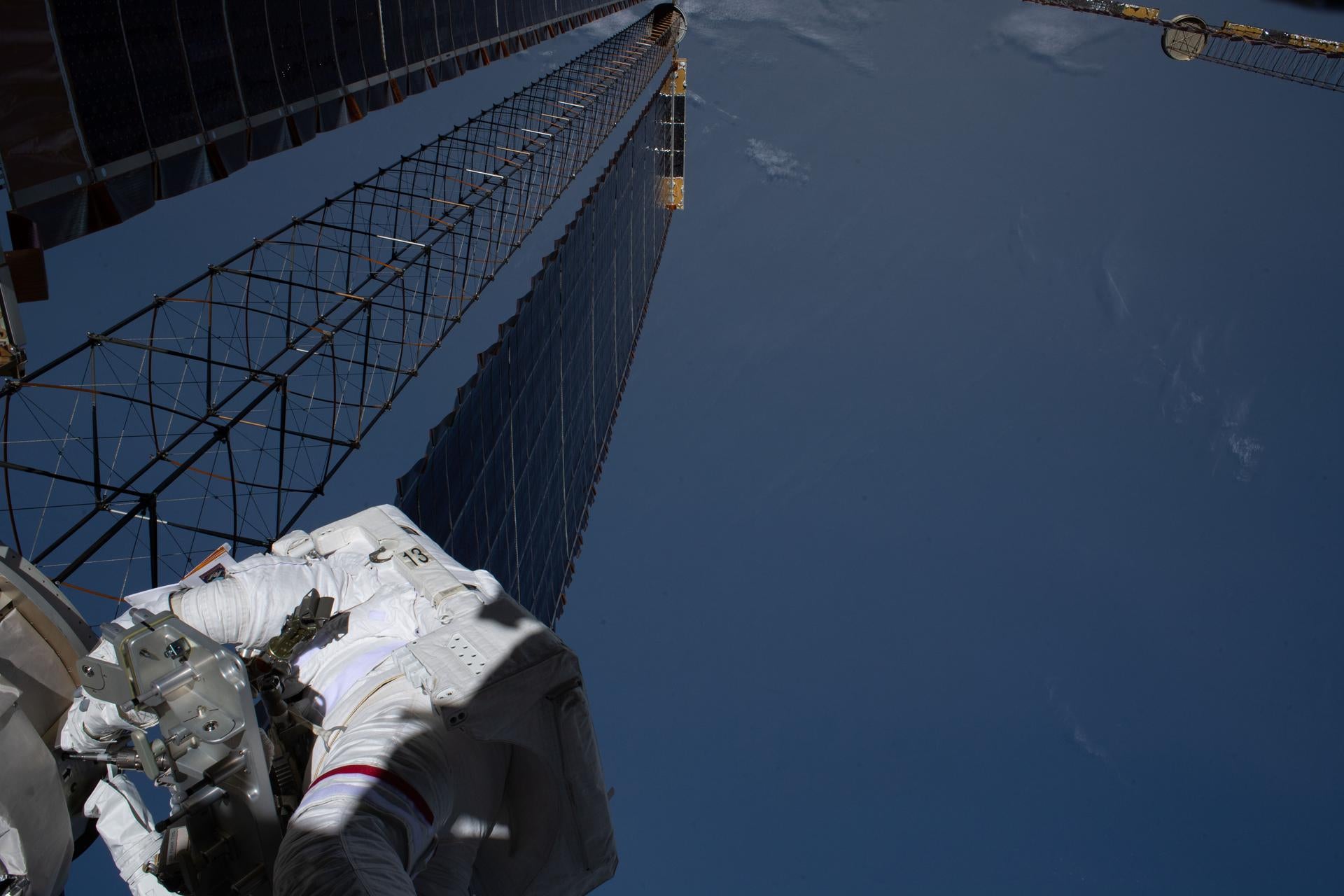Space Business: Culture Wars
Dear readers,


Dear readers,
Welcome to Quartz’s newsletter on the economic possibilities of the extraterrestrial sphere. Please forward widely, and let me know what you think. This week: Blue Origin’s culture, Rocket Lab’s SPAC, and Starlink’s business case.
🚀 🚀 🚀
What can Jeff Bezos do about Blue Origin?
The billionaire entrepreneur has stepped down from the CEO job at Amazon to focus on other priorities, including the space company he sees as among his most important contributions to human society. Blue Origin has an extensive agenda to fulfill for Bezos: Creating the transportation infrastructure, particularly reusable rockets, he and many other space advocates see as necessary to realize human flourishing throughout the solar system.
In practice, Bezos has spent billions on his project, and has seen some results: The reusable New Shepard launch vehicle and its BE-3 engine won the Collier Trophy in 2016. Blue won a contract to develop a powerful new rocket engine for Boeing and Lockheed Martin’s rocket maker, United Launch Alliance. He he was won government funding to begin developing a vehicle to land on the moon.
But progress has been slow. Last week Blue announced its orbital rocket, New Glenn, would not make its first flight until 2022, and the company’s explanation for why left something to be desired. New Shepard, expected to begin flying passengers in 2019, has yet to announce a date to do so.
In recent years, the space industry has been waiting with bated breath for Blue Origin to offer real competition to SpaceX, and they’re still waiting. At Ars Technica, Eric Berger analyzes the situation in three ways: Bezos chose to literally build the biggest and most advanced rocket anyone could think of, rather than iterating toward it with smaller vehicles along the way. The company has spread its ambitions out across multiple arenas, and perhaps lost focus. Finally, Blue has become more like a traditional contractor than a scrappy start-up.
“Culture” has always been a distinction between SpaceX and Blue Origin; it was one reason that Bezos and Musk never teamed up despite sharing the same aspirations. Unlike Musk, who appointed himself SpaceX’s chief designer, Bezos isn’t known for delving into the engineering nitty-gritty.
In 2015, Bezos described “my main job [at Amazon] today: I work hard at helping to maintain the culture.” Perhaps that gives a clue as to what he can do at Blue now—to find some middle ground between Big Aerospace timelines and the frenetic work culture of Silicon Valley.
Blue is seen as a less punishing workplace than Musk’s shop, where burnout can seem endemic. One industry source jokes that Blue is where SpaceX employees go to retire. Yet Bezos has never been known as anything other than a tough manager—indeed, Blue employees were miffed by an attempt to launch a test flight early in the pandemic.
Bezos can replace all PowerPoints with six-page narrative memos (if he hasn’t already) but it seems unlikely he’ll pare back the company’s ambitions. Some industry observers argue that Blue doesn’t embrace risk in its test and development programs as much as SpaceX does, iterating at a slower pace. As I write this, SpaceX’s next generation rocket is attempting a public test flight—demonstrating a successful landing, followed by another rapid, unexpected disassembly.
The jury remains out on whether SpaceX’s willingness to blow up hardware is exactly what got it into space faster than Blue Origin. But so far, throwing money at the challenge hasn’t been enough for Bezos. He may have to incinerate a few rockets to get where he’s going.
🌘 🌘 🌘
IMAGERY INTERLUDE
This photo of astronaut Kate Rubins working on the International Space Station last week reminds me that the same engineering techniques I used to build a toothpick bridge in elementary school also support humanity’s outpost in orbit. Rubins is prepping the station ahead of the arrival of new, more powerful solar panels.

👀 Read this 👀
This week, my colleagues rolled out an entire field guide to Bezos’ legacy at Amazon. Here are some significant figures:
$233 billion: Amazon’s global income from sales in FY 2019
$1 trillion: Amazon’s valuation in Sept 2018, making it the second US company to ever reach a trillion-dollar market value
150 million: Prime members as of Jan 2020
$2 trillion: Amazon’s predicted valuation by 2023
$6 billion: Jeff Bezos’ net worth, 2000
$188 billion: Jeff Bezos’ net worth, 2020, $75 billion of which was added in 2020 alone
$36 billion: MacKenzie Bezos’ net worth when she divorced Jeff in 2019. She has pledged to give half of her wealth to charity.
🛰🛰🛰
SPACE DEBRIS
SPAC’D. Rocket Lab, the leading maker of small launch vehicles, says it will go public with a valuation of $4.1 billion after being acquired by a special purpose acquisition company. Rocket Lab also said it would develop a new reusable medium-lift rocket aimed at serving the needs of large satellite constellations, alongside its effort to develop its Photon spacecraft as an orbital transfer vehicle. CEO Pete Beck also ate his hat during the announcement, fulfilling his promise to do so if the company ever developed reusable launch vehicles. Beck had previously said that kind of innovation was a distraction from his central goal of low-cost space access before ultimately embarking on the project last year.
Cost-Benefit. Lluc Palerm at Northern Sky Research takes an in-depth look at the business plan for Starlink, SpaceX’s internet satellite network. The overwhelming challenge is the cost of the user terminal and antennae, and for the business to work, the company will need to find a customer base of superloyal, heavy internet users—which actually sounds feasible for Elon Musk.
Starbase, Texas. Boca Chica, the town near Brownsville, Texas where SpaceX has done much of the development of its Starship rocket may get a new name: Musk tweeted that he is working on creating a town called Starbase as he expands his company’s footprint in the Lone Star State. You can file this tweet with “funding secured“—Texas officials say they recently heard from SpaceX about the idea, but that nothing has actually been done.
Talking Heads. I had a blast talking with a panel of space thinkers about what’s next for the space exploration; now you can listen to the conversation as a podcast. Don’t miss the discussion of utopian space schemes.
Moonage Daydream. The Japanese entrepreneur who put a down payment on a trip around the moon in SpaceX’s Starship has opened up applications to join his merry band. The trip is planned for 2023, but that’s Elon time.
Your pal,
Tim
This was issue 86 of our newsletter. Hope your week is out of this world! Please send your ideas for fixing Blue Origin, SPAC gossip, tips, and informed opinions to [email protected].